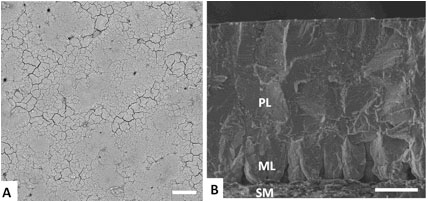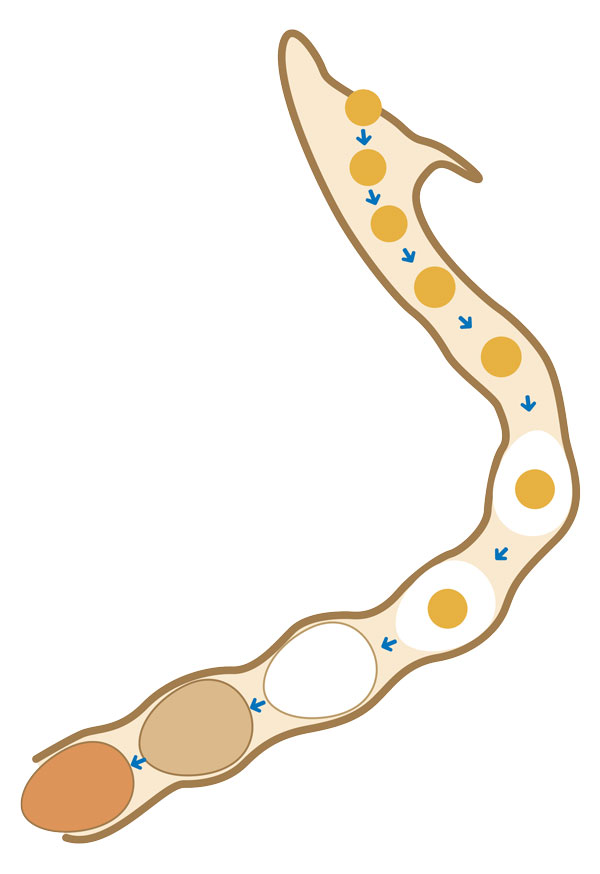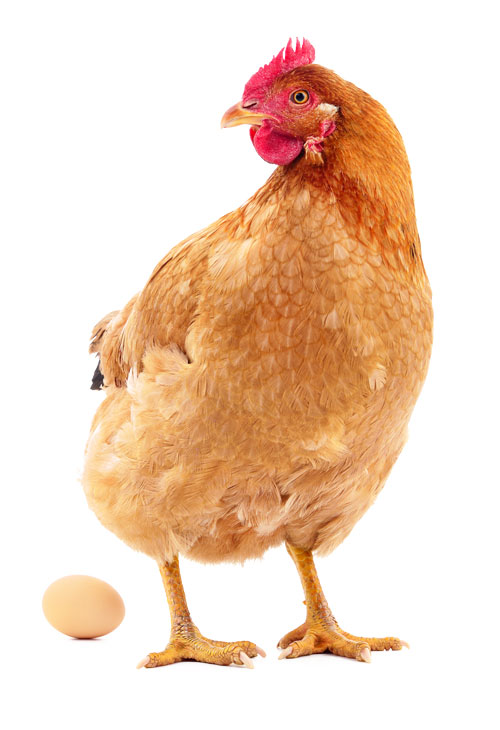To read more content about aviNews España ENG
To read more content about aviNews España ENG
Contenido disponible en:
Español (Spanish)
The quality of the eggshell is paramount to both producers and consumers. In particular, it is very important in upholding the hygiene of eggs, as any damages or cracks will make the eggs more susceptible to bacterial contamination.
On the other hand, both eggshell formation and laying processes are quite taxing on the hen’s body. This is why the production of eggs and the quality of the eggshell deteriorate as the hens age during the laying period.
Maintaining egg production and while upholding eggshell quality through extended production cycles (until hens are 100 weeks old) is a major challenge for the industry, which can be achieved through selection programs genetically assisted and adequate nutrition of the hens during the laying period.
Sustainable food production is one of the most important challenges in our society in a context of constant world population increase. The egg is one of the most complete, important and affordable foods in our diet, rich in proteins, vitamins and fatty acids. However, the poor quality of the eggshell is a major food safety risk, since eggs with a damaged shell are more easily contaminated with bacteria (Salmonella) (Travel et al., 2011).
In this article we will describe in detail the structure of the shell, its formation and what factors determine its quality and how it can be improved.
Eggshell is a thin mineral layer (approximately 350 microns thick) that protects the egg’s contents from mechanical impacts, dehydration, and contamination by microorganisms (Nys et al., 1999; Hincke et al., 2012). This layer is perforated by numerous pores that allow the exchange of gases necessary for the embryo to breathe. It also supplies the calcium necessary for its skeletal development.

Figure 1. Ultrastructure and microstructure of eggshell. Electron microscopy images of the outer surface of the eggshell with the cuticle (A) and of the shell cross section (B) .PL, ML and SM: palisade layer, mamillary layer and membranes, respectively. The scale bar equals 100 microns.
Egg shell membranes are a network of collagen fibers (mainly type X), glycoproteins, and proteins. There is a thinner inner membrane located above the limiting membrane surrounding the albumen, and a thicker outer membrane attached to the mammillary cones (inner part of the mineral layer). The thickest part of the mineral layer is made up of columnar crystals of calcite (calcium carbonate).
Finally, the outer surface of the eggshell is covered by the cuticle, a very thin organic layer (a few microns thick), which covers the pores, controlling the permeability of the shell and preventing the entry of bacteria through the shell (Muñoz et al., 2015). The cuticle contains proteins (lysozyme) and lipids with powerful antimicrobial activity.
Therefore, the cuticle, when present, is an effective barrier against the penetration of bacteria and is of great importance for the food safety of the egg. That is why, the European regulations do not allow the washing of eggs, since this practice can damage and even completely eliminate this protective layer.

Laying hens have specific physiological adaptations for laying eggs (Nys and Le Roy, 2018). When chickens reach sexual maturity at approximately 16 weeks of age, estrogen levels increase and the oviduct begins to grow rapidly. Two weeks later, they lay their first egg. The formation and mineralization of the eggshell is a process that requires a large amount of calcium. Chickens need to mobilize more than 2 g of calcium per day, equivalent to 10% of their total body calcium. In general, calcium comes in part from the diet and in part from the skeleton.
In addition, chickens develop a new type of bone within the marrow cavities of their long bones – medullary bone – that is metabolically active and can be more easily reabsorbed to release calcium. Medullary bone serves as a calcium reservoir for calcification of the eggshell at night when chickens do not eat and the intestinal calcium supply is depleted.
Medullary bone formation begins approximately two weeks before laying the first egg (Whitehead, 2004).
During the daily laying cycle, there are notable changes in the physiology of chickens that need to transport large amounts of calcium and carbonate ions through the uterine tissue (Nys and Le Roy, 2018). In the afternoon, just before the formation of the eggshell begins, chickens develop a specific appetite for calcium and during the night when the eggshell is formed, the production of vitamin D is stimulated, which increases the absorption of calcium by the tissues of the intestine.
In addition, the resorption of the medullary bone allows to constantly transfer calcium for the formation of the eggshell when the calcium reserves of the diet have been depleted. On the other hand, during the formation of the eggshell, laying hens hyperventilate to obtain enough respiratory CO2 from which carbonate ions are formed.
The shell calcification process is the longest stage of the egg formation process (Nys et al., 1999). Eggshell mineralization occurs in the uterus and lasts for approximately 18 hours and ends with deposition of the cuticle, approximately 1 hour before oviposition (expulsion).

The amount of eggs with the damaged shell represents approximately 6-8% of the total egg production. These eggs cannot be marketed, causing substantial economic losses for the egg-producing industry (Hamilton et al. 1979).
The quality of the shell depends on many factors including age, genetics and nutrition, as well as environmental factors (cage types, lighting programs) (Dunn et al., 2009; Nys, 2017). In particular, the quality of the eggshell deteriorates with the age of the hens.
Currently, weight gain with age has been reduced via chicken selection. Still, the percentage of shell weight and thickness of the eggshell tend to decrease as the hen ages. Likewise, there are notable changes with the age of the chickens, in the structural characteristics of the eggshell (decrease in the mamillary density and decreased linking between the mineral part and the membrane; increase in the size of the calcite crystals; decrease in the amount of cuticle) that reduce the mechanical properties and the quality and integrity of the eggshell (Rodriguez-Navarro et al., 2002; Robert et al., 2013).
This problem is likely to worsen now that the industry aims to extend the laying period up to 100 weeks, to achieve a production of 500 eggs per hen in a single cycle. That is why there is much interest in finding solutions to maintain the performance of the hens and the quality of the egg during longer production periods. (Bain et al., 2016; Nys, 2017).
It is known that both the production of eggs and the quality of the shell is largely determined by genetics, which has allowed to improved these parameters through selection programs (Dunn et al., 2009; Bain et al., 2016). However, the intensive laying of eggs is very demanding on the hens, which is why optimal maintenance of their health conditions is necessary to reach their genetic potential.
Proper hen nutrition throughout the laying period with optimal calcium levels and trace elements (Mn, Zn, Cu) is a key element in maintaining the general health of the hen, to accumulate enough calcium in the bone marrow and to form and maintain the tissues of the oviduct in prolonged laying cycles which promotes good eggshell quality (Nys 2017).
CONCLUSIONS
The quality of the eggshell is a very important factor for the food safety of the egg. Maintaining egg production and, in particular, the quality of the eggshell through extended production cycles (up to 100 weeks) is a major industry challenge that can be accomplished through genetic selection of chickens. However, proper nutrition of the hen during the laying period is a key element in maintaining their general health and achieving maximum genetic potential.